
© Alamy Stock Photo
Searching for a New “We”
Music and Society
“Compositions are not created away from the world in a hermitage. They are created in and with the world.” This is what the composer Liza Lim says about her work, putting into words a rather new conviction: music is created in a social context and, conversely, it has an effect on society. Join us on a multimedia journey of discovery to three composers who were and are consciously part of their society. Learn from Liza Lim how the entanglement of all things can be translated into music. Follow Ludwig van Beethoven, who had to position himself between religion, nobility and Enlightenment ideals. And meet one of the first successful black women composers: with the help of a rich network, Florence Price knew how to defend herself against prejudice.
1
DISCOVERING FLORENCE PRICE
Well Networked – Florence Price’s Path to Success

Florence Price at the piano, circa 1945
© public domain / University of Arkansas
Florence Price (1887–1953) knew that the American classical music industry was hostile to African American women. “My dear Dr. Koussevitzky,” she wrote in 1943, “I have two handicaps – those of sex and race. I am a woman; and I have some Negro blood in my veins.” Price wanted the music director of the Boston Symphony Orchestra to examine a few of her scores. And she wanted him to consider them objectively, without prejudice. Of course, when he returned her scores without comment, how could she know the reason for his rejection?
Although this episode is an infuriating tale of lost opportunity, Price herself was a skillful and strategic advocate of her own music who used multiple professional networks to succeed in an otherwise unwelcoming world. As musicologists Samantha Ege and Alisha Jones have shown, Price developed a strong community of African American women who enabled her to cross conventional racial and gender boundaries.
About Florence Price
In 1887, Florence Beatrice Price was born in Little Rock, Arkansas, as the daughter of a middle-class family. Because none of the local music teachers would accept Black pupils, her mother took over her musical education. Price studied at the New England Conservatory from 1903 to 1906 before returning to her home town, where she taught piano and married a lawyer. A decisive point in her career occurred when she left the provinces for Chicago, where she found great support within the Black community, won several competitions and managed to make a name for herself in the metropolitan musical scene.
When the Chicago Symphony Orchestra included the Symphony No.1 by Florence Beatrice Price (1887–1953) in its programme in 1933, this marked the first time that a major American orchestra performed a piece by a female Afro-American composer. On her journey to this point, Florence Price had had to overcome numerous prejudices, social disadvantages and institutional obstacles. Today, a new perspective of music history that includes a reflection of these very conditions has allowed for a new interest in her person, resulting in quite a few CD-recordings of her work.
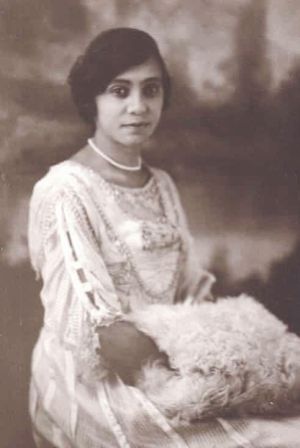
The young Florence Price in an undated photograph
© public domain / University of Arkansas
The most significant of these networks grew out of the National Association of Negro Musicians (NANM), an organisation founded in 1919 that connected Price to other Black artists around the country. Members of the Chicago branch, including Estella Bonds and Maude Roberts George, immediately supported Price upon her relocation to that city in 1927 by providing the finances and organisational labor necessary to bring her Symphony in E Minor before the public in June 1933 under the baton of Frederick Stock, conductor of the Chicago Symphony Orchestra. This unqualified success generated new opportunities that included performances of Price’s “Piano Concerto in One Movement” (1934) in Chicago, Pittsburgh, and New York City at various events sponsored by the NANM and white organizations like the Chicago Musical College and Women’s Symphony Orchestra of Chicago.
The landscape of American classical music changed dramatically in 1935 with the establishment of the Federal Music Project (FMP), a programme designed to support musicians battered by the ongoing economic depression. To Price’s advantage, the FMP’s stated goals also included supporting local composers. Government-funded ensembles consisting principally of white musicians premiered some of Price’s most important works between 1937 and 1941, including a string quartet, a concert overture, and her Third Symphony.
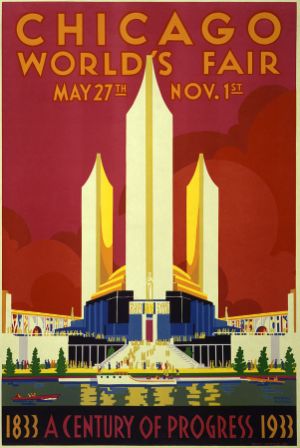
A poster of the 1933 Century of Progress World's Fair held in Chicago.
© Wikimedia Commons
“Of course you sing to and for all, but there may be one person who is unlike the other ninety-nine. This person, you sense, wants to be brought back into the fold and you can help bring him back. And so as you sing you have to be so deeply convinced of what you are doing that the person for whom you are singing will be convinced.”
– Marian Anderson
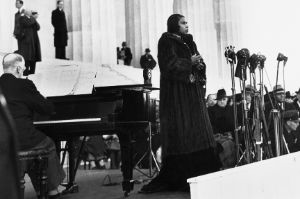
Marian Anderson is singing Florence Price. Open-air concert on the steps of the Lincoln Memorial in Washington, April 1939.
© Wikimedia Commons
Meanwhile, Price had begun working closely with the famous contralto Marian Anderson, who programmed her compositions on a 1935 European tour and kept them in her international repertoire for another fifteen years. When Anderson would sing one of these compositions at a prestigious venue like Carnegie Hall or record them on a prominent label, editors would often approach Price with competing publication offers.
Price had applied for membership in the American Society of Composers, Authors, and Publishers in 1934, but the organisation did not approve her application until 1940, causing her to lose any potential royalties from Anderson’s advocacy during that six-year period. Her connections to government-supported groups were essential during that period. After 1940, however, ongoing royalties enabled Price to return to the far less lucrative world of orchestral music – the world of Serge Koussevitzky and major private ensembles emerging from economic hardship. With her characteristic modesty, Price described her race and gender as impediments, fully expecting that Koussevitzky might reject her outright. But, with a decade of successes behind her, she was able to enter the conversation knowing that she needed Koussevitzky no more than Kousseviztky needed her.
About the author: Douglas W. Shadle teaches Musicology at Vanderbilt University, Nashville (USA). His most recent book, “Antonín Dvořák’s New World Symphony”, is published by Oxford University Press.
Yannick Nézet-Séguin on Florence Price
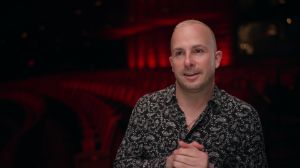
Yannick Nézet-Séguin
Florence Price in the Musikfest Berlin Programme
2
DISCOVERING LIZA LIM
In Search of Something to Connect Everything

Liza Lim
© Jascha Zube
As a young girl, Liza Lim heard the forest. Not some cultivated copse but the irrepressibly loud tropical jungle that is capable of filling great sweeps of land beyond its confines with sound. The composer, who was born in Perth in 1966 and whose name, incidentally, is pronounced like Lisa with a soft s, spent parts of her childhood in the Sultanate of Brunei, where her parents, both of them doctors of Chinese origins, worked for some time. Monkeys scampered around her garden and the rain forest lay just outside her sleepy town. What she heard, felt and experienced there still resonates in her music today. Liza Lim composes sounds that recall the screams of wild animals, and she draws melodic lines that branch out like aerial roots, sprawling forth as if their fine endings were perpetually searching for new connections.
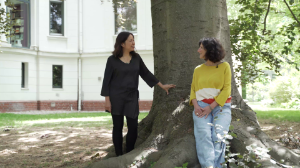
Martina Seeber in conversation with Liza Lim
How do forests think? When Liza Lim was composing a piece for the Australian ELISION Ensemble in 2016, her imagination was ignited by a book about the communication between people, plants and animals, written by the Amazon-explorer Eduardo Kohn. The work “How Forests Think” was followed by the ensemble piece “Extinction Events and Dawn Chorus” in 2018, which deals with the Anthropocene, plastic waste, the past, present and disappearance. Liza Lim, who studied in Melbourne and Amsterdam and holds a chair for composition in Sydney today, is fascinated by complex issues. Her compositions address cultural identities, the destruction of the environment, femininity, magic and spirituality. However, while listening to her works, it is not necessary to reconstruct their underlying train of thought. These topics activate a musical imagination in Liza Lim that allows the listener to forget about thought, language and mathematical formulas. Similarly, her ensemble composition “Machine for Contacting the Dead” about musical instruments from an ancient Chinese burial site is not a pseudo-scientific attempt at reconstructing a long-faded ritual music. And yet, the composition, which will be presented at Musikfest Berlin by Ensemblekollektiv Berlin, can also be heard as an evocation.
Liza Lim in the Musikfest Berlin Programme
At other times, it is the almost mundane things that release Lim’s creative energy. In “String Creatures”, a commissioned piece for the US-American JACK Quartet, the composer focusses on the apparently simple phenomenon of the string, and not only in the sense of the string of a musical instrument, but also a string of yarn, a thread, a chain, a lead and a dynamic sequence.

Martina Seeber talks to Liza Lim about her “String Creatures”
In all her intuitive, intellectual and cultural changes of perspective, Liza Lim is looking for something that hides behind things. Something that connects everything: connecting the rubbing of a finger across a metal string with the magical experience of an oscillation, the sound of a violin with the movements of a plant or the experience of timelessness with the song of ocean dwellers: “I am looking for a different kind of beauty”, she admits, a beauty that “has nothing nostalgic about it, but rather represents a kind of unfamiliar terrain.”
About the author: Martina Seeber, a Rhinelander living in Stuttgart, is a freelance author, moderator and editor for new music at SWR.
About Liza Lim
Liza Lim (born in 1966 in Perth) is one of Australia’s leading composers. She has received commissions and performances from some of the world’s pre-eminent orchestras (Los Angeles Philharmonic, Bavarian Radio Orchestra, BBC, WDR, SWR), festivals (Festival d’Automne Paris, Salzburg, Lucerne, Holland, Venice Biennale and all the major Australian festivals) and ensembles (Musikfabrik, Ensemble Intercontemporain, ELISION, Ensemble Modern, Arditti String Quartet etc). Since 2008, she has been Professor of Composition and Director of the Centre for Research in New Music, CeReNeM, at the University of Huddersfield.
Recent works include her fourth opera commissioned by Ensemble Musikfabrik and the Opera House in Cologne based on Jonathan Safran Foer’s exquisite ‘cut-out’ book, ”Tree of Codes”; a violin concerto, “Speak, Be Silent” for the 40th anniversary season opening of the Geneva-based Ensemble Contrechamps, and solo pieces that explore new areas of technique for instruments such as the bassoon (”Axis Mundi”) and double-bell euphonium (”The Green Lion eats the Sun”). She connects her compositional practice to areas of thought and knowledge such as Australian Indigenous aesthetics (eg: “Invisibility” for solo cello); Asian ritual forms & performance practices (“Moon Spirit Feasting, a Chinese ritual street opera”); a Sufi poetics of bewilderment, loss, communion and ecstasy (”Tongue of the Invisible”); the textilic arts of weaving and knot-making as a cross-modal ‘technology for thinking’ (”Winding Bodies: 3 knots”), as well as empathy and intuition in an ecology of collaboration.
Her compositions have been published by Casa Ricordi (Milano, London & Berlin) since 1989 with a catalogue of over 70 works. She has portrait CDs with Hat Hut, WERGO, ABC-Classics and Dischi Ricordi with other work appearing on HCR, Neos, Aeon, Winter & Winter, and Vox Australis.

Portrit of Liza Lim
© Harald Hoffmann
“The upending of linear progression by the accelerating forces of the ‛new normals’ of environmental emergencies and the way deep histories of non-human time are exposed by species mass extinction challenges us with ruptures in how we might organise what is and what counts as knowledge.”
Liza Lim
3
BEETHOVEN’S UTOPIA
Tracing Beethoven’s “Missa solemnis”
Was it an expression of profound piety when Ludwig van Beethoven composed his “Missa solemnis Op. 123”, which he himself described as his “greatest work”? Beethoven, this advocate of human rationality who never concealed his rejection of clerical hierarchies over decades? When he began to work on his opus magnum in 1819, he was going through a severe life crisis. He was nearly deaf and the drawn-out legal dispute over the guardianship of his beloved nephew Karl had been lost. In this situation, the professed champion of the enlightenment set out on a search for faith. He studied standard works on world religions and was in close contact with the Catholic theologian Johann Michael Sailer, whom he had met during his endeavours concerning Karl’s education. Beethoven was looking for comfort. In an 1821 letter to Archduke Rudolph, dedicatee of his “Missa solemnis”, he wrote: “God, who knows my inner self and the sacred diligence with which I fulfil my duties as a man […], will surely wrest me from these hardships at long last.”
About Ludwig van Beethoven
There is no easy access to the biography of Ludwig van Beethhoven (1770-1827). Far too many clichéd ideas have clouded our image of the composer, too many legends have been created and there are too many, partly ludicrous, hypotheses and assumptions about the conditions of his life as well as too many open, apparently unanswerable questions – for example, concerning the identity of his “Immortal Beloved”. At the same time, there is a crushing amount of biographical material – the analysis of Beethoven’s letters alone is a special branch of imposing complexity – so that complaints about the difficulty of writing a Beethoven-biography are a musicological commonplace. And yet, the established external facts about his life are scarce. Beethoven was born on 16 or 17 December 1770 in Bonn, as the son of a humble musician. His living conditions were of a kind that we would describe as precarious today. After initially being taught by his father, who tried to mould his son into a wunderkind like Mozart, Kapellmeister Christian Gottlob Neefe, Kapellmeister in Bonn, took over Beethoven’s musical education. The boy developed at such a rapid pace that he was employed by the Bonn Court Orchestra from 1782. In 1787, the adolescent Beethoven was sent to Vienna to study with Mozart. These studies, however, had to be abandoned after only two weeks, because Beethoven’s mother fell gravely ill. She died no more than a few weeks after his return. His father was completely overcome by his alcohol addiction and Beethoven took charge of the family.
Equipped with a grant from the Elector, Beethoven traveled to Vienna once more in 1792, where he was taught for just over a year by Joseph Haydn, until the latter set out for his second journey to London. Following the French occupation of Bonn in 1794, the Elector’s financial support ceased. From this time, Beethoven lived the life of a free-lance musician in Vienna. He was cordially welcomed by the city’s music-loving aristocracy, and for the rest of his life, he maintained friendly relations with many members of those circles, overcoming all boundaries of rank. Beethoven initially made a name for himself as a pianist and improviser, but he soon began to steadily publish new compositions. The year 1803 saw the beginning of a central period of creation during which he composed an incomprehensible abundance of the masterpieces that we have come to associate with his name above all others, such as his Third (Eroica) to Eighth Symphonies. Beethoven was now regarded undisputedly as the most eminent composer of his time.
Around the late 1790s, Beethoven had first become aware of a hearing defect which was to progress inexorably, causing complete deafness by 1820. Increasingly isolated from his surroundings, Beethoven developed traits of an eccentric. His life was further soured by the constant need to haggle with his publishers and by his chronically poor health. From the year1815, there was an additional worry about his nephew, for whose education he felt responsible after the death of his brother. And yet, during the last decade of his life, he composed a refined late oeuvre that counts among the absolute highlights in the history of music. Beethoven died on 26 March 1827.

Beethoven with the manuscript of the Missa solemnis, 1820 - oil painting by Joseph Karl Stieler.
© Beethoven-Haus, Bonn / Wikimedia Commons

Beethoven, 1804/1805. Detail from the portrait by Joseph Willibrord Mähler, Public Domain Wiki Commons
Despite his search for faith and his declared desire to write “true church music”, Beethoven admitted that the “Missa solemnis” could also be performed as an oratorio. This finally occurred on 26 March (greg. 7 April) 1824 in St Petersburg, at the instigation of Prince Nikolaus Galitzin, Russian envoy in Vienna. In the Austrian capital, where due to Metternich’s censorship regulations the performance of Latin church music was only permitted in liturgical use and forbidden in the concert hall, one month later, only “Kyrie”, “Credo” and “Agnus” were performed as “Drei große Hymnen” and with an exceptional permission issued by the imperial censorship authority. But should the “Missa solemnis” even be played in a concert hall? For Beethoven, concertante performances can have been nothing but a compromise. As he wrote to his close friend Andreas Streicher in 1824, his intention was to “awaken religious emotions both in the singers and the listeners, and to render them permanent” with a music that had been created under the personal impression of a reverent trembling in the face of the divine.
“All music is revolutionary in its own way. With Beethoven, the revolution becomes audible, with the romantic part reflecting the emotional situation of the individual. [...] In any case, it is furiously interesting to find out to what extent the music conveys messages about the thinking and feeling of its time of origin.”
John Eliot Gardiner
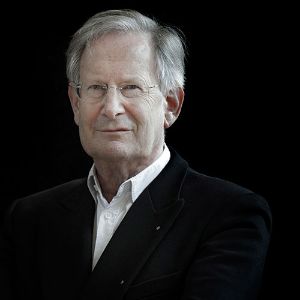
John Eliot Gardiner conducts the “Missa Solemnis” at the Musikfest Berlin.
© Sim Canetty Clarke
However, the “Missa solemnis” invokes a kind of religiousness borne by the ideal of humanism, a kind that had already receded far into the distance at the moment the work was created – similarly, Beethoven’s “Ninth Symphony” celebrates a humanism that apparently ensued from enlightenment but never became social reality. After the French Revolution, the Catholic Church was in dire straits: The young General Napoleon Bonaparte had ordered the occupation of the Papal States in Rome, the kidnapping of the aged Pope Pius VI and the imposition of the French administrative system on the city. Even the new Pope Pius VII, who had to be elected in Venice, was taken prisoner in 1809 with Napoleon, who had in the meantime been crowned emperor, once again pulling strings in the background. For a long time, numerous ecclesiastical princes had been found among the champions of enlightenment; one example is Beethoven’s first employer, Maximilian Franz, prince elector and Archbishop of Cologne. After the restoration implemented following the Congress of Vienna, however, there was no more room for anything that even remotely resembled revolutionary thought. At the time when Beethoven completed his “Missa solemnis”, therefore, the once seemingly realistic option of a Christendom informed by enlightened humanism had long become utopian. Thus, an “ideal” place of performance for this work presumably never existed.
About the author: Harald Hodeige works for symphony orchestras, concert venues, music festivals and radio stations as an editor, author and speaker for concert introductions. For many years he worked as programme editor at NDR, and since 2018 he has been responsible for the Audi Summer Concerts in Ingolstadt.
“Humanity is increasingly entangled in problems. But that is precisely why we need the hope that speaks from this music. We are materially better off than the people of that time, but politically, morally, spiritually we are in a mess. If we look at how we treat our neighbours and our environment, then perhaps Mozart's and Beethoven's music has even more to say to us than it did to the people of that time.”
John Eliot Gardiner
Beethoven’s “Missa solemnis“ in the Musikfest Berlin Programme